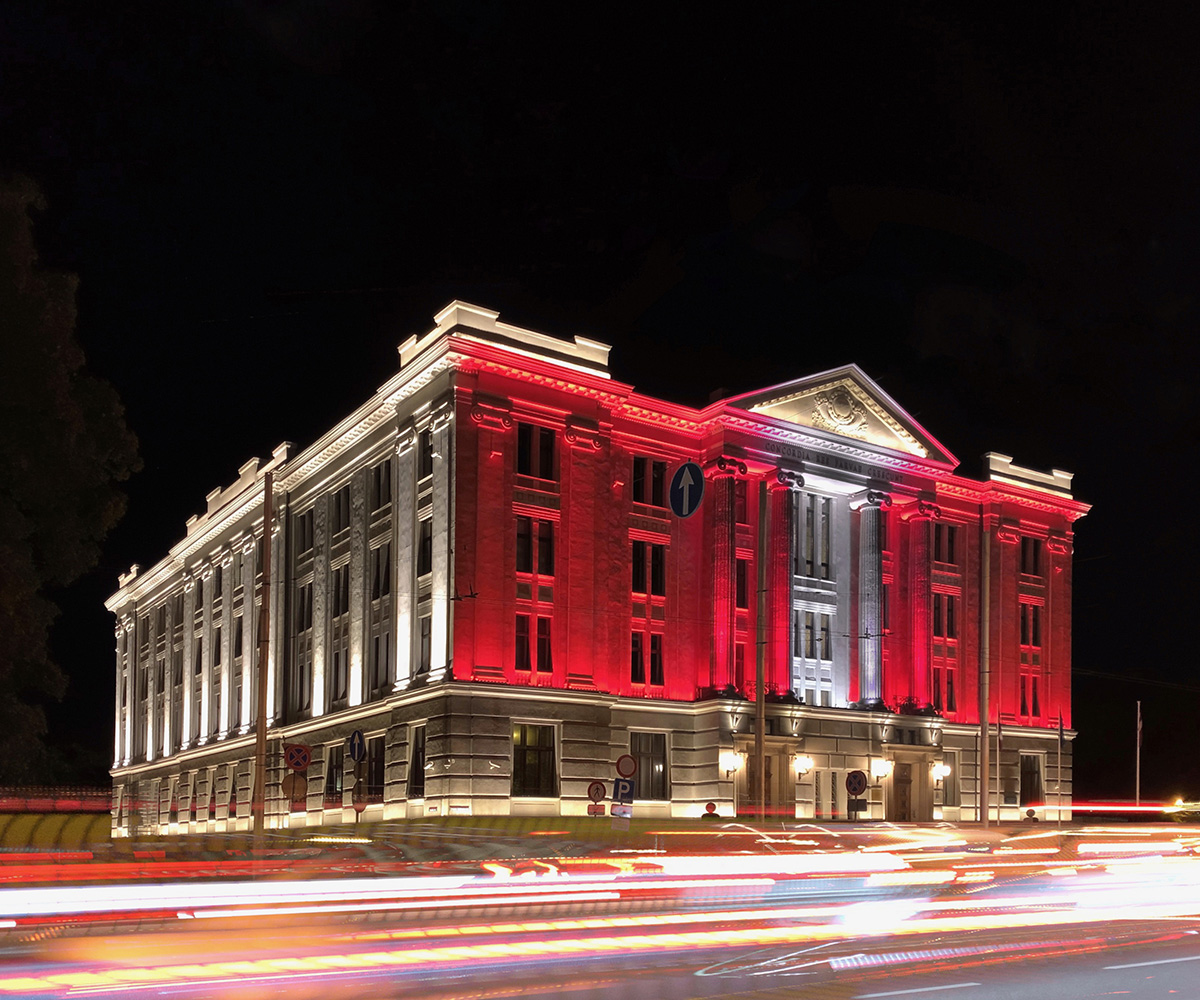





General view of the building during daylight hours
Faсade lighting prior to project implementation
Daily lighting mode
Festive lighting, the flag of Latvia
Festive lighting, the flag of Latvia
Festive lighting, the flag of Lithuania
![]()






![]()
A NEW LIGHTING SYSTEM FOR THE FACADE OF THE MINISTRY OF FOREIGN AFFAIRS BUILDING HAS BEEN COMPLETED
At the request of Valsts nekustamie īpašumi, Neonita has created a new lighting system for the facade of the building of the Ministry of Foreign Affairs.
The system, which includes exclusive design luminaires and software, has been specially developed using energy-efficient solutions, it makes it possible to illuminate the facade of the building in honor of important events in the colors of the flags of the UN and NATO, as well as Latvia and other EU and NATO countries.
The control system is interactive and allows you to easily change the facade lighting algorithms.
In total, about one million euros have been invested in improving the functionality of the building.
This building is the only neoclassical building in Riga at the beginning of the 20th century, whose architecture is most accurately reproduced in pure forms of classicism (ionic columns, the stone-lined facade of the building, etc.).
On the pediment of the building are the words: "Concordia parvae res crescunt" (from Latin - small states are strengthened by consent), destroyed during Soviet Latvia. A complete Latin aphorism is formulated as follows: “Concordia parvae res crescunt, discordia maximae dilabuntur” - by consent, small states become stronger, the greatest ones break up due to disagreement.
The building was designed and built for the needs of the bank. In the spacious lobby was the operating room of the bank. On the upper floors were apartments for government officials.
The interiors of some rooms in the 1920s were designed by the pioneer of the Latvian art deco, Julia Madernieka - ornamental and structural drawings. Unfortunately, they were not appreciated by the public. The artist offered vibrant color rhythms (pink, purple, green, black, white, gold, and silver) and the density of ornaments on wall and ceiling paintings, which, without exaggeration, was very active. At that time, when the Central Committee of the Communist Party of Latvia was functioning in the building, the original decoration of the premises was gradually destroyed due to barbaric cosmetic repairs.
Local and foreign companies took part in the construction of the building.
The external staircase is made of granite massif brought from Finland; the walls of the lobby of the building are finished with marble from Hamburg, the roof is covered with English slate, and the blinds are purchased in Munich. The walls of the rooms are lined with wood panels, the building has stained glass windows. The main decorative facade and interior decoration of the house were performed by August Volz (a German sculptor who worked in Riga since 1875), as well as main staircases and sandstone columns. The interior design and decoration of the bank were carried out by the Berlin company Emil Heinicke.